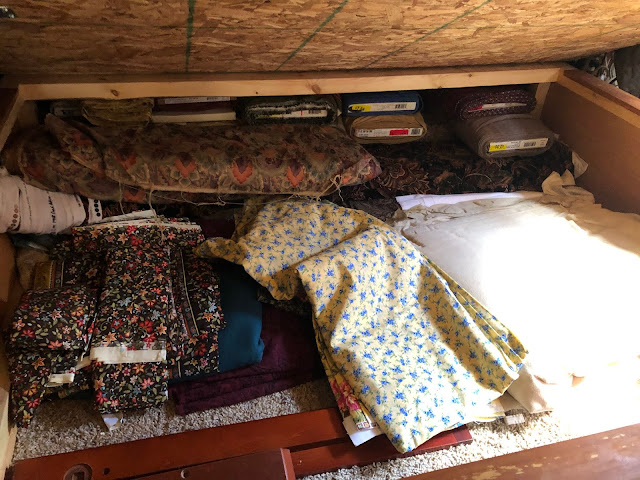This half bolt of incredibly beautiful cotton India block print has been through several rebuilds and outfits, it was first a huge 5 yard Colonial skirt my Sister hand stitched up for me at Grand Portage Rendezvous in 2006.
It then was taken apart and a shirt for my husband was made from it and the rest used as a Irish working woman's weskit and 3 yard skirt.
Over time the boning in the weskit began to curl and the bottom tips flipped up every time I sat down. I also spent a lot of time tugging it down into place, since I had miscalculated the length of my waist when I made it. It also puckered between the eyelets as the boning got tired. I temporarily fixed it by adding more eyelets but I knew I had to do something to save one of my favorite outfits.

This got me thinking that if I got out my dress form, I could attach the skirt to the weskit, which would pull the boning straight by it's weight, and bring the dress into better conformity with the actual fashion of the day.
I pinned the skirt backwards on the form and split the seam down the back, putting the weskit on over it.
I then invisibly whip stitched the weskit bias to the skirt from the outside, turn the edges of the skirt in about two inches down the split and matching the front points of the weskit with the turned back skirt edge.
After hand stitching the two together from the front, I turned the garment inside out and remounted on the form, cut off the excess fabric and whip stitched along the edge of the weskit bottom to assure a strong joining.

Here I am in my redone outfit, with my new skirt and wonderful stays made by Pat Lund. The colonial stays are spiral metal boning and actually help me with back support as I toil through the day. This outfit is 5 years old and has seen weekly heavy duty in my kitchen. In fact, I wear it every Saturday, cooking, hauling water, pounding stakes and in general abusing it in every way known to working woman kind. This rebuild keeps it in my working wardrobe for years to come.
















